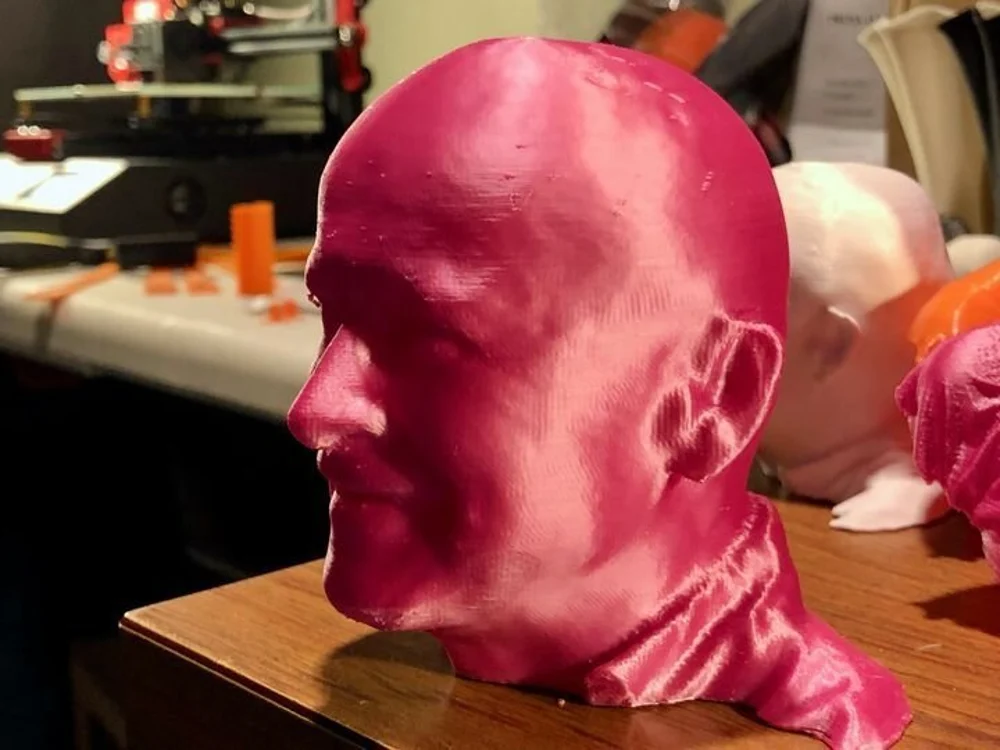Silk PLAs normally produce impressive prints that are shiny and seemingly a bit translucent, giving them both the feel and look of being covered in silk. With this kind of filament, there’s no need to paint, as the natural appearance is already quite dazzling.
Typically, “silk” filaments are enhanced PLA filaments, owing their glossy result to various additives. As such, they tend to show most of the same pros and cons of PLA filament. In the case where silk filaments have a different base material, you might then expect them to have different properties. But for this article, we’ll focus mostly on PLA-based silk filaments.
Considerations
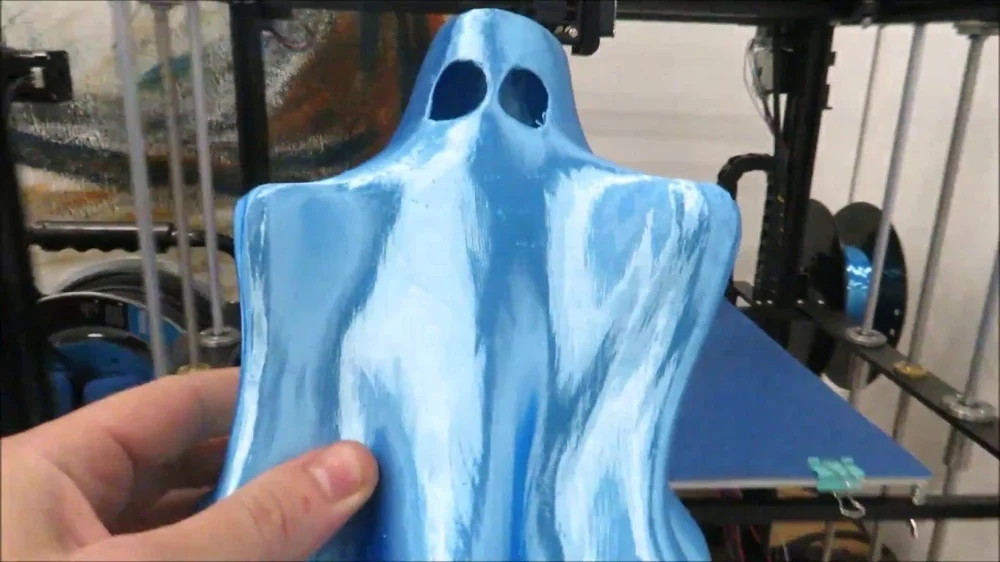
In this article, we’ve listed some of the most notable silk filaments currently available. While forming our list, we took the following into consideration:
- Popularity with users, as reflected by comments and reviews
- Presentation and reputation of the manufacturer
- Quality of prints, as demonstrated by user photos
- Unique features
All of these factors mean the filaments listed should make a quality purchase and produce beautiful prints. But although no particular problems are expected while printing with this filament type, it’s worth mentioning a couple of differentiating points compared to normal PLA.
Due to the presence of more elastic additives in the filament, some users have reported problems with bed adhesion and clogging. In fact, the correct bed temperature is a bit of a gray area, as many manufacturers suggest an unheated bed.
Also, this type of filament could cause problems with under-extrusion and part shrinkage. It seems that these filaments work best with slightly elevated printing temperatures compared to normal PLA, so the print is more durable and less brittle, and to allow the elastomers to melt correctly and give it the signature glossy look. Some good news is that warping doesn’t seem to be a prevalent issue with silk PLA.
Before we get to our list, if you want something printed in silk filament but don’t have the means or time, consider our 3D printing service marketplace. You can be sure you’ll get the best deal and a dazzling final product.
Now, let’s take a dive into the beautiful world of silk PLA!
Eryone
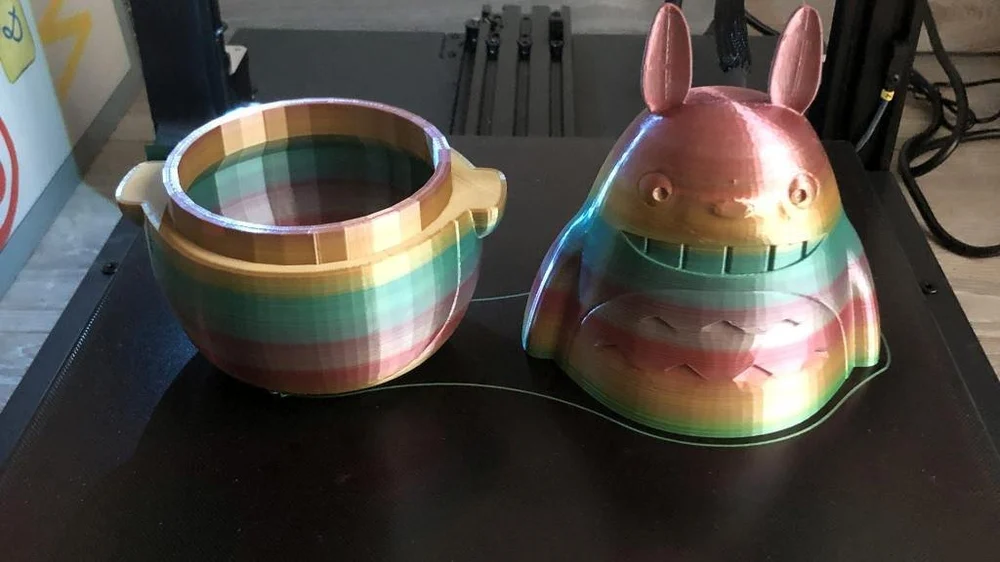
Eryone is a Chinese manufacturer of uncommon filament blends and accessory parts for 3D printers. Among other things, they offer a line of popular silk PLA filaments. This material is available in 10 colors.
The main advantage of their silk PLAs is the reported ease of printing. Like a few other companies, they offer a rainbow silk filament, with a color gradient providing an impressive aesthetic when printed.
They also claim that their filament is made from starch remnants, but this claim hasn’t been independently confirmed.
- Average price/kg: $27
- Available sizes: 1.75 mm; tolerance 0.05 mm; 1-kg spools
- Available colors: 10
- Νozzle temperature: 190-230 °C
- Bed temperature: N/A
- Printing speed: 30-60 mm/s
Fiberlogy is a European manufacturer in Poland, specializing in the production of filaments. FiberSilk Metallic is their offer in the category of silk filaments, although they claim that the final look of their prints will be closer to metal rather than plastic.
The general user sentiment about the printing experience with these filaments is above average, so they should be a safe purchase. Interestingly enough, the company recommends increased cooling during the printing process (which differs from other manufacturers’ suggested settings).
- Average price/kg: $27
- Available sizes: 1.75 mm; tolerance 0.02 mm; 850-g spools
- Available colors: 13
- Nozzle temperature: 210-230 °C
- Bed temperature: 50-70 °C
- Printing speed: 35-60 mm/s
Hatchbox
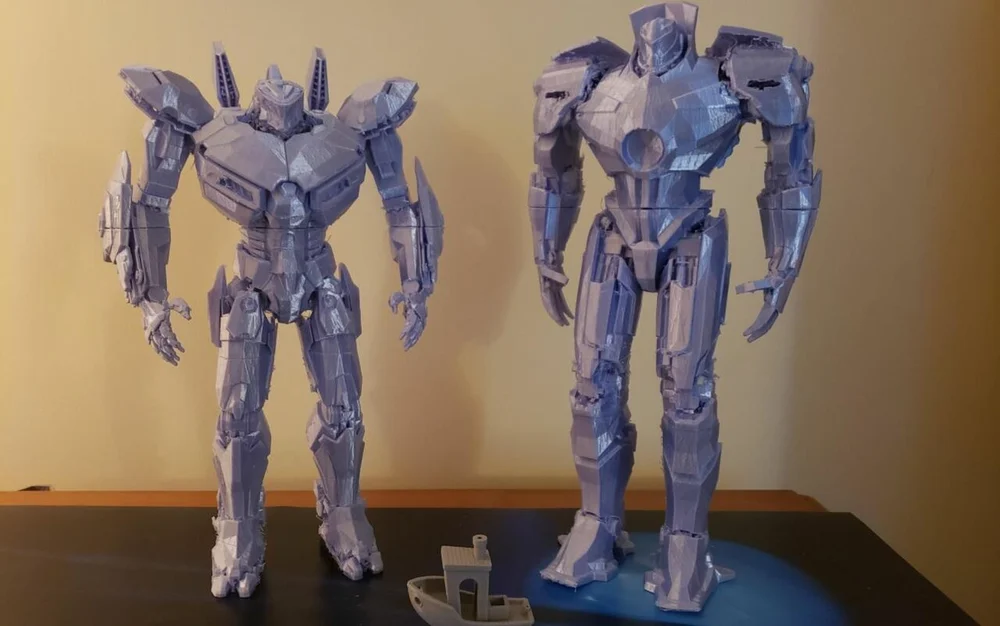
Hatchbox is a reputable filament manufacturer known for making high-quality 3D printing filaments at a low cost, in a variety of materials and appearances. Their Silk PLA is just one popular type of filament in their expansive portfolio, available in seven colors.
Hatchbox Silk PLA has an impressive diameter tolerance of ±0.03 mm, and according to the manufacturer, doesn’t require a heated bed. Reviewers have noted that this filament prints like Hatchbox’s regular PLA, another great filament, but yields a shimmery finish. That said, according to a few users, it can have some adhesion problems, both to the build plate and other print layers.
- Average price/kg: $20-25
- Available sizes: 1.75 mm; tolerance 0.03 mm; 1-kg spools
- Available colors: 6
- Nozzle temperature: 180-210 °C
- Bed temperature: 0-60 °C
- Printing speed: 50-60 mm/s
eSun

eSun is a well known Chinese filament maker that produces its own silk PLA filament called eSilk-PLA. These filaments are a rather new addition to its product range and are currently offered in 15 colors.
The company suggests that due to its appearance and mechanical properties, it’s more appropriate for its silk filament to be used in large models with curved surfaces and practical products, such as furniture accessories and decorations.
However, according to users, smaller items print well without any particular issues aside from finding the optimal temperatures. For example, eSun claims that there’s no need to heat the bed in order to print, but they also state that if heating is used, the range of temperatures should be between 60-80 degrees. This can be solved with some slight experimentation.
- Average price/kg: $27
- Available sizes: 1.75 mm; tolerance 0.03 mm; 1-kg spools
- Available colors: 15
- Nozzle temperature: 190-220 °C
- Bed temperature: No heat or 60-80 °C
- Printing speed: 35-60 mm/s
Sunlu
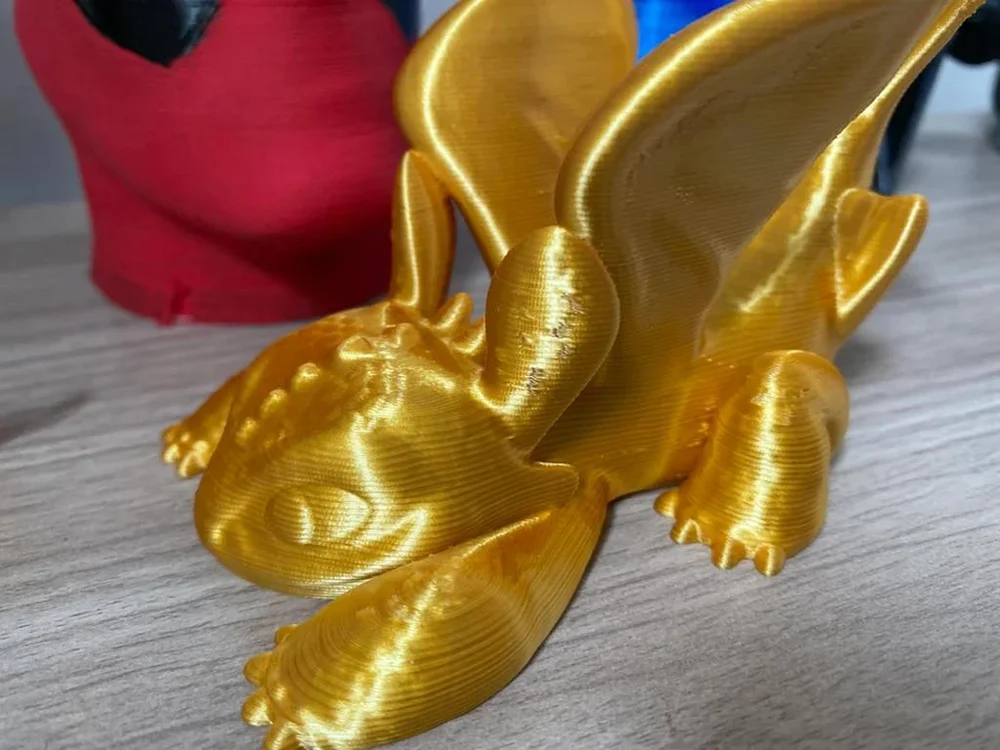
Sunlu is another well-known maker of filaments originating in China. Sunlu’s Silk PLA is a well-balanced filament and it has by far the widest color selection on this list: 32!
However, it’s a bit trickier to print than standard PLA as it requires higher nozzle temperatures and the correct bed temperature. These temperature requirements may create some problems with overhangs when longer cooling times will be needed.
Another issue that might come up is blobbing, especially towards the end of prints. This could be caused by the elastomers in the filament counteracting the retractions. However, its finish, for the most part, is beautiful: It leaves a shiny and smooth surface, without many visible defects.
Some other users have reported a problem with the Z seam on the gold and silver filaments, which is corrected by changing the alignment in your slicer software. Most user comments are extremely positive, which lives up to the reputation of the company’s other products.
- Average price/kg: $27
- Available sizes: 1.75 mm; tolerance 0.02 mm; 1-kg spools
- Available colors: 32
- Nozzle temperature: 190-220 °C
- Bed temperature: 60-80 °C
- Printing speed: 50-100 mm/s
MatterHackers
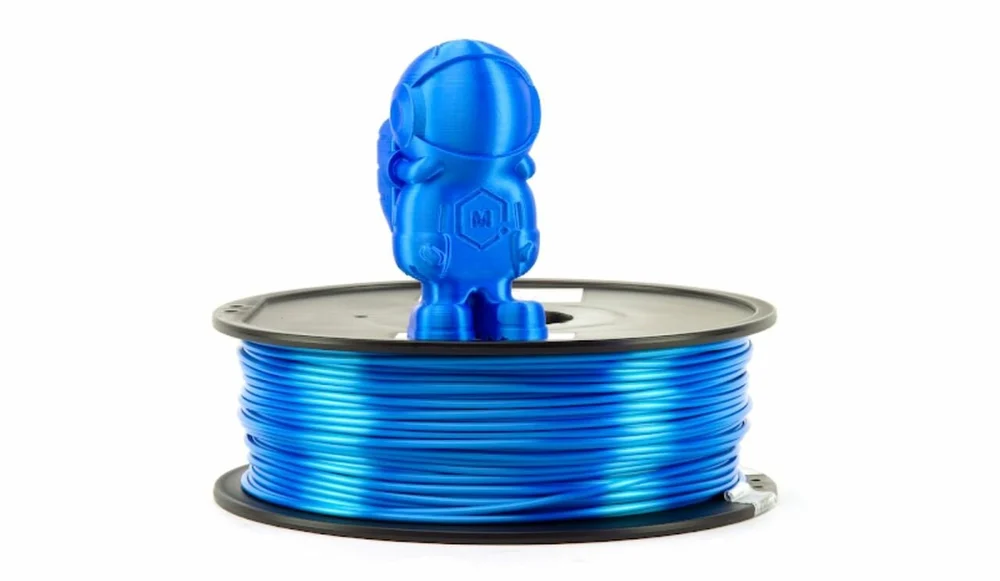
MatterHackers is a well-known, USA-based online store of all things 3D printing, including printers, tools, replacement parts, accessories, and materials. While the store carries products from many different brands (e.g. Creality, Lulzbot, Ultimaker), MatterHackers also offers its own brand of filament and other 3D printing equipment. MH Build Series PLA is MatterHackers’ take on an affordable, all-purpose PLA filament, and the company also offers a silk version.
Matterhacker’s Silky PLA is great for printing mechanical or structurally oriented models requiring decent visual appeal. This filament comes with a diameter tolerance of +/- 0.05 mm, which isn’t exceptionally good, but works (i.e. doesn’t clog) on most 3D printers.
- Average price/kg: $20-25
- Available sizes: 1.75 mm, 2.85 mm; tolerance 0.05 mm; 1-kg spools
- Available colors: 11
- Nozzle temperature: 190-220 °C
- Bed temperature: 25-55 °C
- Printing speed: 50 mm/s
Polyalchemy

Polyalchemy is a developer of high-quality, visually focused 3D printing filament, including its Elixir Silky PLA. And even though this material is Polyalchemy’s official silk option, any of Polyalchemy’s Elixir PLA filaments are considered silkier than most other filament options. As seen in many users’ posts about Polyalchemy Elixir and Elixir Silky PLA, the filament provides an especially smooth and vibrant finish to prints.
Polyalchemy Elixir Silky PLA comes in 17 colors and two diameters, so you have a lot of options to fit your project and printer. While these filaments are great visual materials, they still maintain PLA’s easy printability properties, as indicated in Filament Review’s analysis of Polyalchemy’s Elixir PLA.
As of writing, the 1.75-mm version is out of stock. But given how popular it is, we think it’ll be restocked soon!
- Average price/kg: $30-40
- Available sizes: 1.75 mm, 2.85 mm; tolerance 0.05 mm; 0.75-kg spools
- Available colors: 17
- Nozzle temperature: 205-220 °C
- Bed temperature: 0-60 °C
- Printing speed: 25-40 mm/s
TTY3D
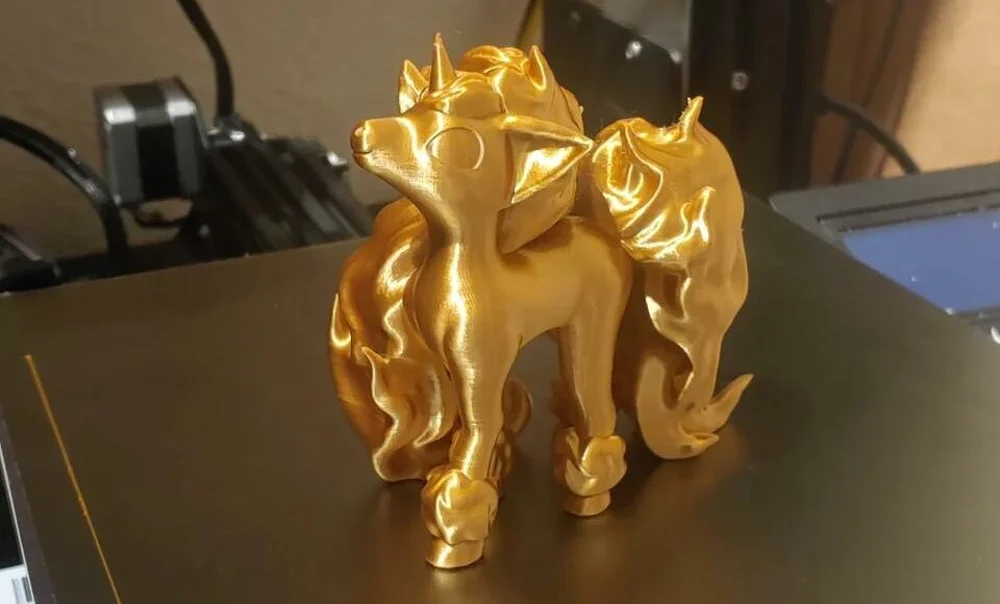
TTY3D Silk filament is a popular filament with lots of positive comments from users. It needs a trial-and-error process in order to find the optimum profile settings for each printer, but once found, almost all your prints will come out shiny, with vivid colors and very nice layer adhesion.
As with a few brands on this list, TTY3D has a rainbow filament that has the same chromatic results. A few complaints have been spotted regarding the accuracy of the colors, but this doesn’t apply to the more popular gold or silver filaments.
Also, some users have reported that after a certain number of spools of this filament, they’ve experienced an excessive buildup of remnants on the nozzle and some resulting bed adhesion issues.
- Average price/kg: $26
- Available sizes: 1.75 mm; tolerance 0.05 mm; 1-kg spools
- Available colors: 14
- Nozzle temperature: 190-235 °C
- Bed temperature: No heat or 50-80 °C
- Printing speed: 35-60 mm/s
Mika3D
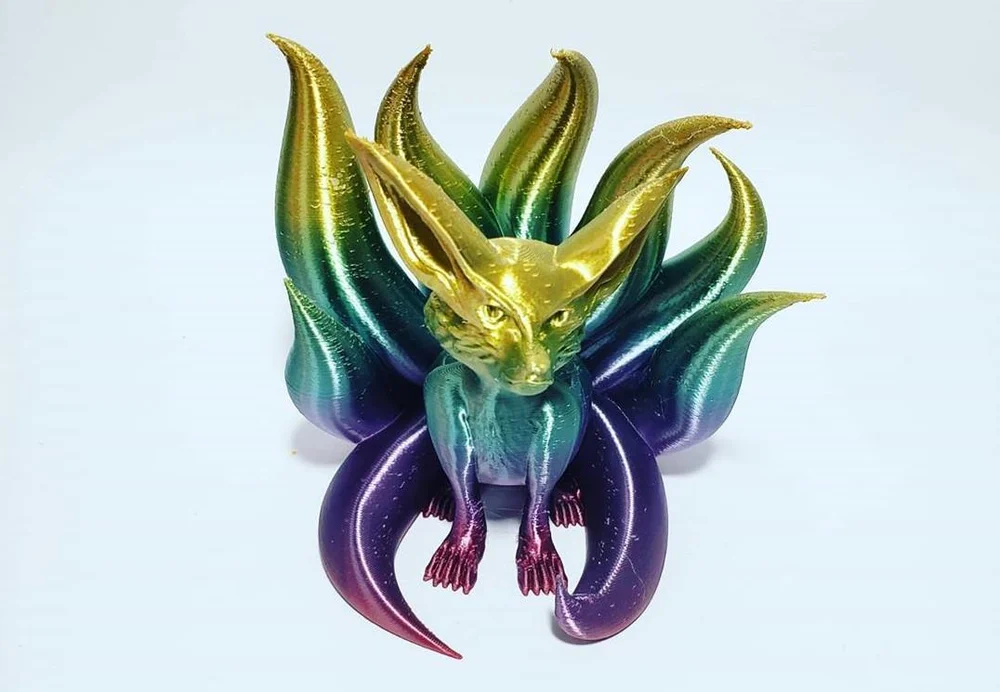
Mika3D’s Shiny Silk PLA is an interesting filament for several reasons.
First, it’s considered a quality brand, and therefore it’s quite popular. Second, it’s available as a bundle which includes all 12 colors that the company produces. And lastly, their spools are smaller than the typical weight of 1 kg, which can be good or bad, depending on the situation.
On the actual printing side of things, this filament is an overall great performer! Again, users need to find the correct settings for their specific machines in order to get the best results.
Some comments have been made regarding the first layer needing different temperature and speed settings compared to the rest of the print, but this is easily addressed with some experimentation.
- Average price/kg: $27
- Available sizes: 1.75 mm; tolerance 0.05 mm; 500-g spools
- Available colors: 12
- Nozzle temperature: 195-230 °C
- Bed temperature: 60-80 °C
- Printing speed: 35-60 mm/s
Hello3D

Hello3D is a newcomer in the silk PLA space, but despite this, it’s quickly gained some traction with the filaments it offers. Users report that it prints well, has little to no diameter variation, no clogging, and no particular adhesion problems, resulting in smooth and shiny results.
An interesting feature about this filament is that it tends to have a threshold temperature of about 200 °C, under which its final look is “matte”, and above which it gives the desired shiny look.
According to its manufacturer (and several users confirm this), it tends to be a more elastic material than normal PLA, meaning it’s more bendable instead of brittle. Although this means better adhesion, it can also create problems with overhangs and in the overall strength of the print.
- Average price/kg: $25
- Available sizes: 1.75 mm; tolerance 0.02 mm; 1-kg spools
- Available colors: 3
- Nozzle temperature: 190-220 °C
- Bed temperature: 30-50 °C
- Printing speed: 30-50 mm/s
CC3D
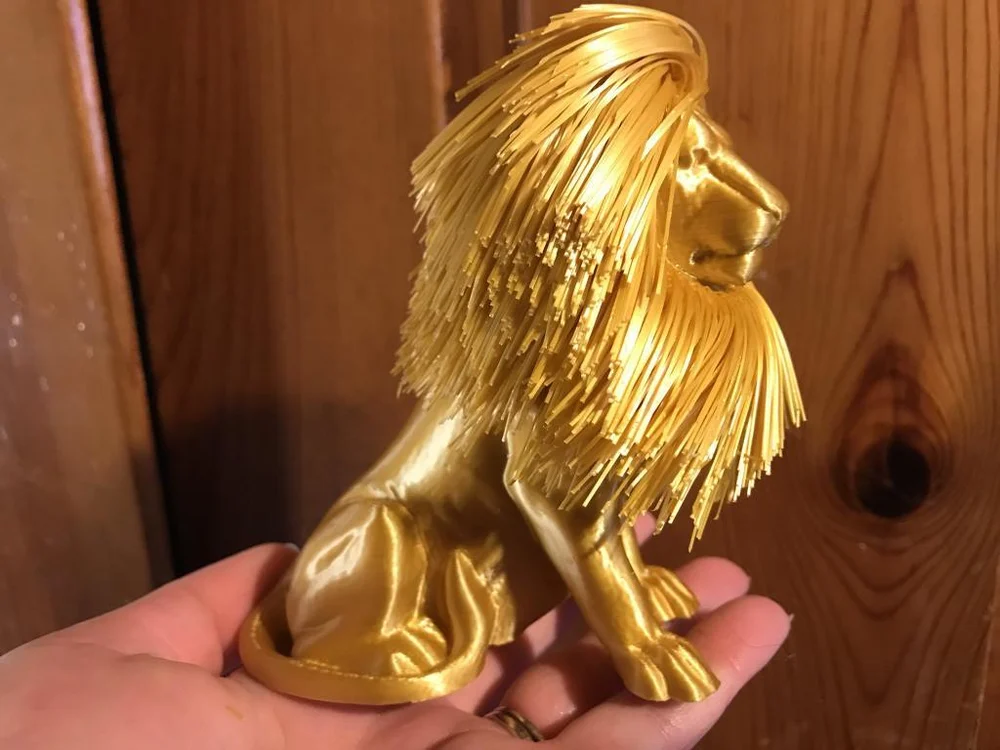
CC3D’s silk series consists of 16 rather unusual colors that give the silk “look and feel” to your models when printed. Users have overall good comments about CC3D’s silk filaments, but there seem to be differences between colors in terms of issues faced; some colors seem to print better than others.
As usual, you’ll need to experiment a bit with the exact temperature settings within the range that’s recommended by the manufacturer in order to find the combination that works best for this filament.
A common observation is that this filament seems to be more brittle compared to others, which leads to under-extrusion problems. A possible solution is to try and print it using higher temperatures, between 220 and 230 °C.
- Average price/kg: $27
- Available sizes: 1.75 mm; tolerance 0.02 mm; 1-kg spools
- Available colors: 16
- Nozzle temperature: 190-210 °C
- Bed temperature: up to 60 °C
- Printing speed: 40-80 mm/s
Geeetech

Geeetech Silk PLA is one of the few filaments that carries the title “Amazon’s choice”, which in general is attributed to products of the highest quality. And indeed, it stands up to its reputation, as there are many happy users that do not report any problems in its use.
The only possible issue is that, as opposed to other silk filaments, it can’t be used very successfully in 3D pens, although it performs brilliantly in desktop machines. Thankfully, its price is comparable to other silk PLA filaments in the market.
- Average price/kg: $27
- Available sizes: 1.75 mm; tolerance 0.03 mm; 1-kg spools
- Available colors: 3
- Nozzle temperature: 195-220 °C
- Bed temperature: 60-80 °C
- Printing speed: 50-100 mm/s
Noulei
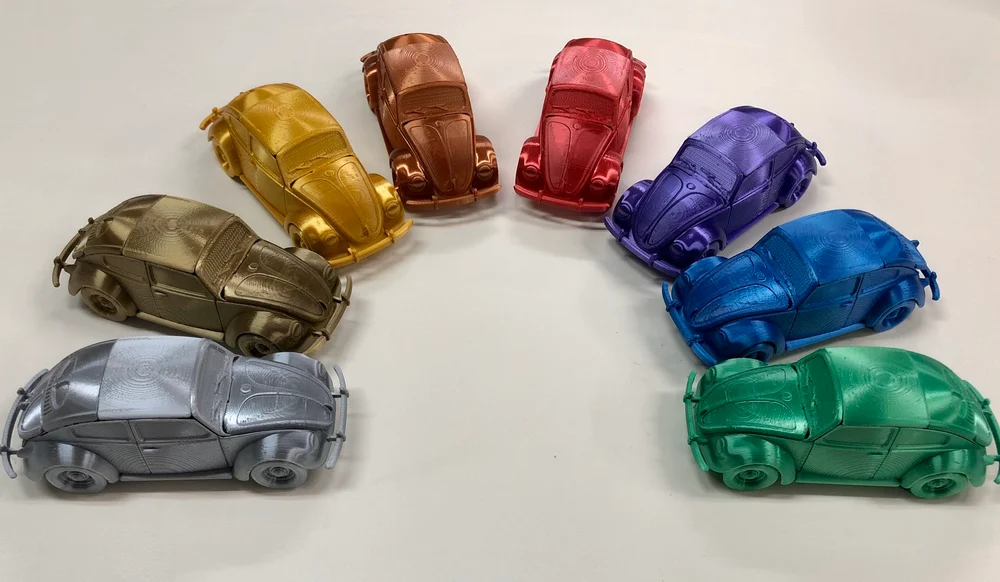
Noulei, a Chinese manufacturer, specializes in filaments and other accessories for the 3D printing industry. They offer 22 color variations of their silk PLA, which has been warmly welcomed by their users. They also have a rainbow silk filament, with color changes every few meters.
Noulei silk filaments print smoothly and the colors are vivid enough to create a metal look, as opposed to the expected silky plastic.
Some common problems that are seen in the other filaments also exist here, including brittleness, clogging, and poor adhesion, but these have more to do with non-optimal print settings than the filament itself.
- Average price/kg: $30
- Available sizes: 1.75 mm; tolerance 0.02 mm; 500-g spools
- Available colors: 22
- Nozzle temperature: 195-230 °C
- Bed temperature: 50-80 °C
- Printing speed: 35-60 mm/s
